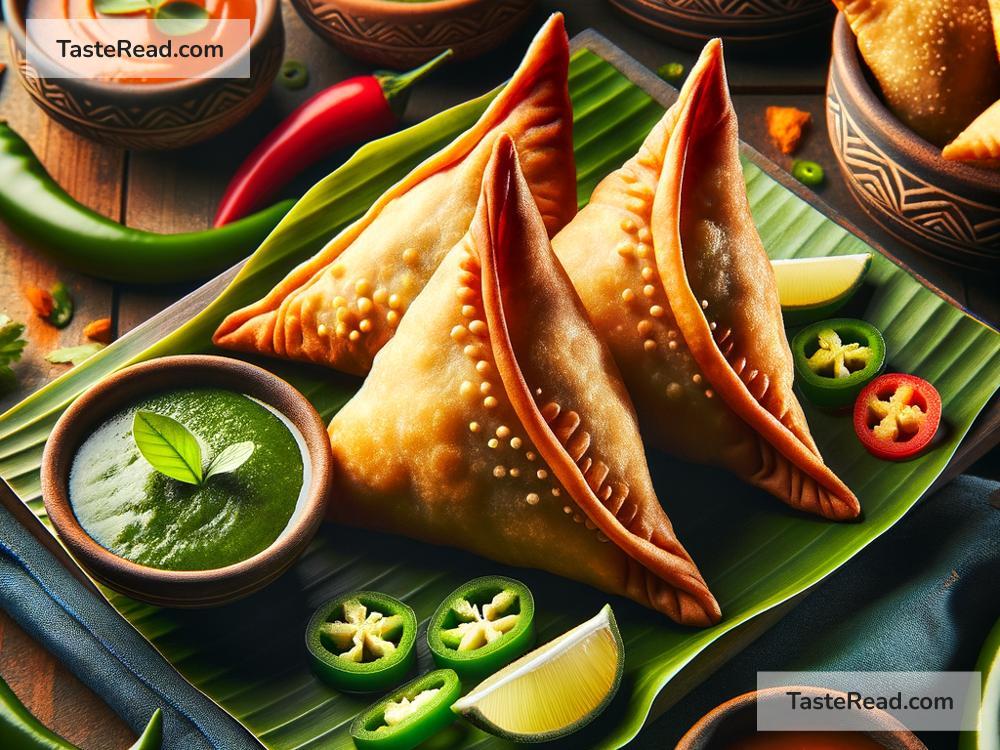The Evolution of the Indian Samosa
The samosa is one of India’s favorite snacks. It’s a crispy, golden pastry filled with spicy potatoes, peas, and sometimes meat. Served with tangy chutneys, it’s the perfect blend of flavor and texture, making it a go-to snack for millions of people. But have you ever wondered where the samosa came from? Surprisingly, the samosa didn’t actually originate in India! Let’s dive into the fascinating journey of the samosa, how it evolved, and how it became such an essential part of Indian food culture.
Where Did the Samosa Come From?
The history of the samosa begins far away from India, in the Middle East. In ancient times, small triangular pastries filled with minced meat, nuts, and spices were made by cooks in Persia (modern-day Iran). These snacks were known as “sambosa”. The word sambosa is believed to have been derived from the Persian word sanbosag, referring to a small, triangular pastry.
Persian traders and travelers brought the sambosa to regions like Egypt and Central Asia. It later reached the Indian subcontinent around the 13th or 14th century with trade caravans and the invasion of Mughal rulers. These rulers loved rich and flavorful food, so the sambosa fit right into their cuisine. Over time, the samosa adapted to Indian tastes and began its transformation into the beloved snack we know today.
The Mughal Influence
During the Mughal period in India, the sambosa evolved into a dish fit for royalty. Court chefs replaced the traditional fillings of meat and nuts with spiced ingredients, including lentils, dried fruits, and meat cooked in flavorful Indian spices. The Mughal samosa was a sign of luxury — the pastry was flaky, the fillings rich, and the spices aromatic.
At the same time, regional cooks across India began experimenting with their own versions of the samosa. As it gained popularity, the snack slowly moved from royal kitchens to the streets. This marked a turning point for the samosa, as it became an affordable treat for the masses.
Modern-Day Indian Samosa
The samosa we enjoy today is quite different from its Persian ancestor. Over centuries, Indian cooks replaced the original meat and nut fillings with potatoes, peas, green chilies, and a mix of Indian spices. Potatoes became the star ingredient due to their availability and versatility, especially during British colonial rule when potatoes were introduced to Indian agriculture.
The samosa’s crispy, deep-fried shell is the perfect complement to the soft and spicy filling inside. It’s often served with mint chutney or tamarind chutney, adding even more flavor to the snack. The burst of tangy, spicy, and savory flavors is what makes the samosa so irresistible.
Regional Variations
One of the most amazing things about the Indian samosa is how much it has evolved across different regions. Every part of the country has its own unique take on this classic snack:
-
North India: The classic potato-and-pea-filled samosa is most popular in Northern India. It’s often sold at tea stalls and enjoyed with masala chai (spiced tea).
-
South India: In South India, samosas are smaller and spicier. They may include fillings of boiled lentils, curry leaves, and coconut, offering a completely different flavor profile.
-
West Bengal: Bengali samosas, known as shingara, include fillings like sweetened peas, nuts, and sometimes smaller shrimp or minced meat. They are slightly sweeter and less spicy than their Northern counterpart.
-
Goa: In Goa, samosas often use chicken or beef as fillings, influenced by Portuguese cuisine.
-
Gujarat: Gujaratis make samosas with sweet and tangy fillings, often adding sugar, raisins, or dry fruits for a unique twist.
Samosas Around the World
Indian samosas have also traveled far beyond the borders of India. Thanks to globalization and the Indian diaspora, samosas can now be found in almost every corner of the world. In Africa, samosas are popular street food, often filled with spiced meat. In the UK, Indian samosas are a staple snack, loved by people from all backgrounds. Even in the United States, samosas are frequently served at Indian restaurants and cultural events.
Interestingly, many countries have developed their own versions of the samosa. For example, in Central Asia, samosas are baked rather than fried, and the fillings often feature lamb or beef.
Why Do We Love Samosas So Much?
The samosa’s widespread popularity comes down to its versatility and universal appeal. Whether you’re looking for a spicy snack, a vegetarian appetizer, or something indulgent to go with tea, the samosa fits the bill. It can be made in large batches, making it perfect for parties and celebrations. Plus, the crispy exterior and flavorful filling tick all the boxes for people who love delicious comfort food.
Conclusion
The journey of the samosa from Persia to India and the rest of the world showcases how food travels, evolves, and brings people together. While its origins lie far from Indian soil, the samosa has firmly rooted itself in India’s culinary traditions, becoming a snack that’s enjoyed by everyone — from street vendors to five-star hotels.
Today, the samosa continues to evolve, with chefs experimenting with new fillings and cooking techniques. However, no matter how it changes, one thing remains constant: the samosa will always hold a special place in the hearts (and stomachs) of food lovers everywhere.
So, the next time you enjoy a samosa, take a moment to appreciate the rich history and cultural significance behind this humble yet extraordinary snack. It’s not just food — it’s a delicious slice of history!


